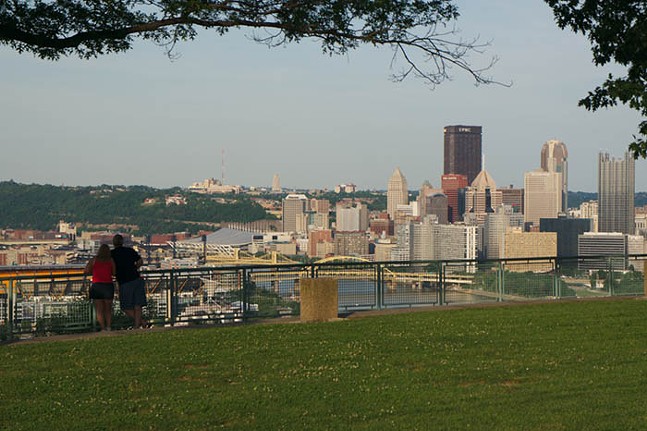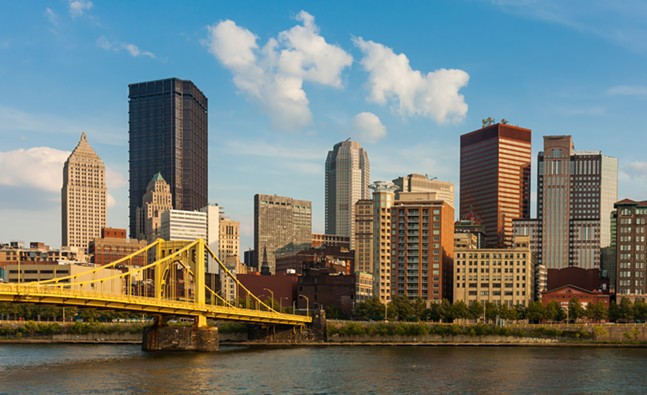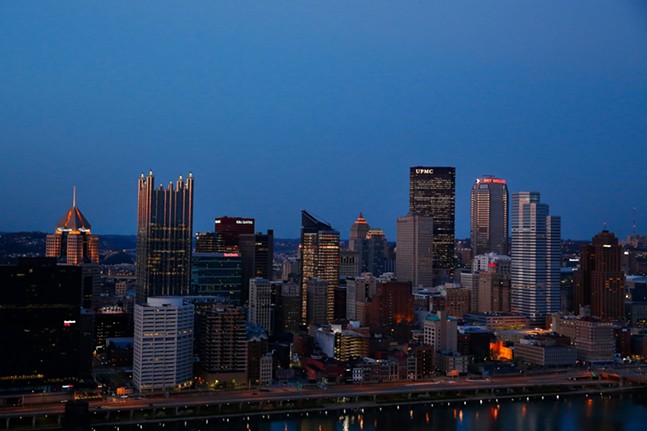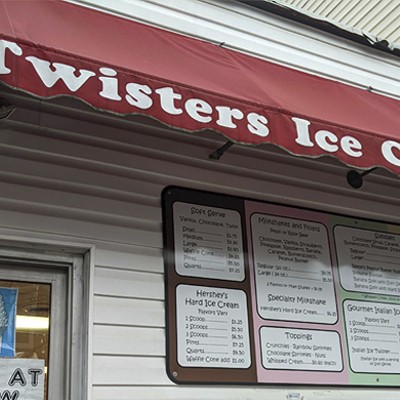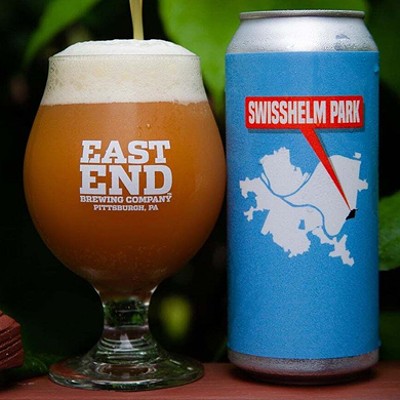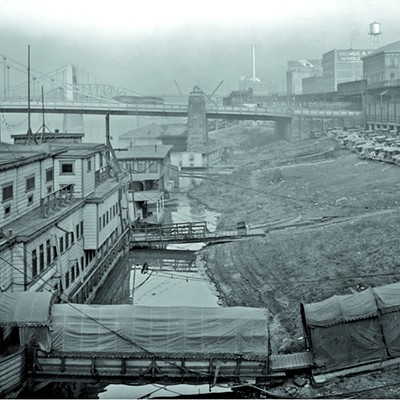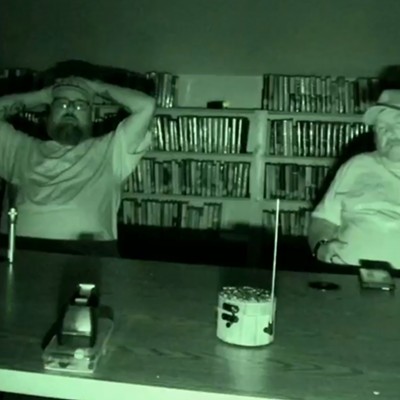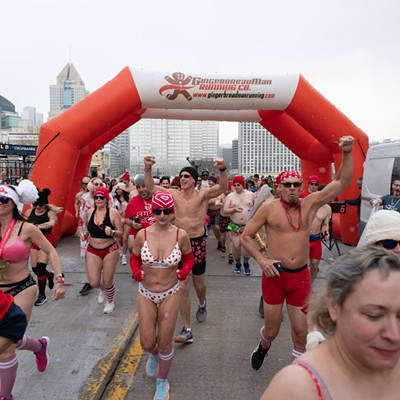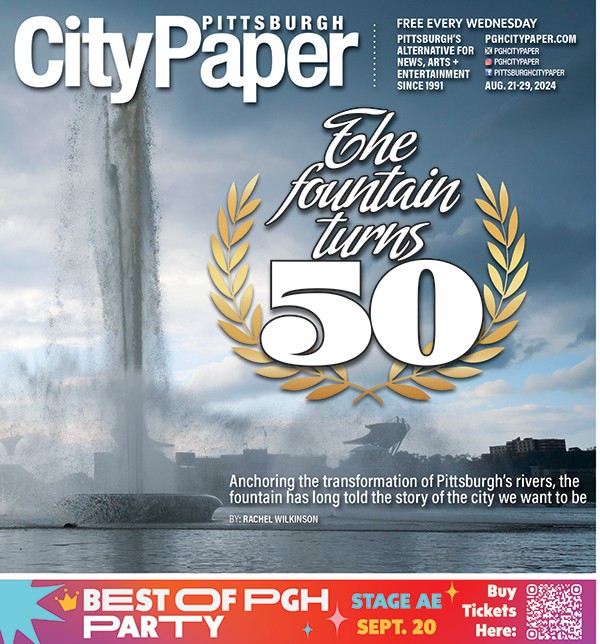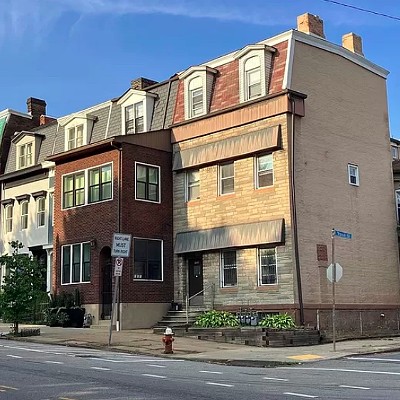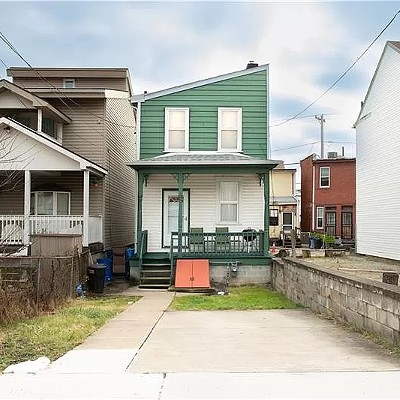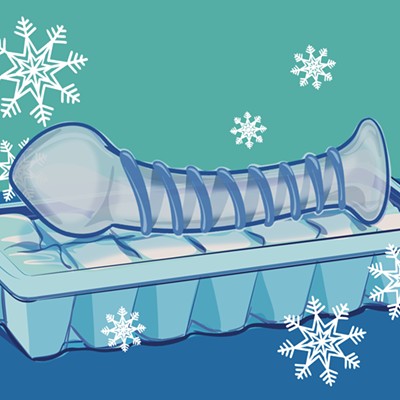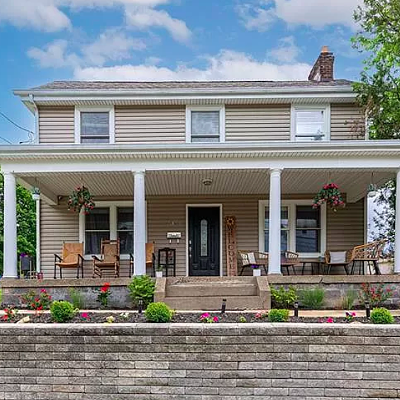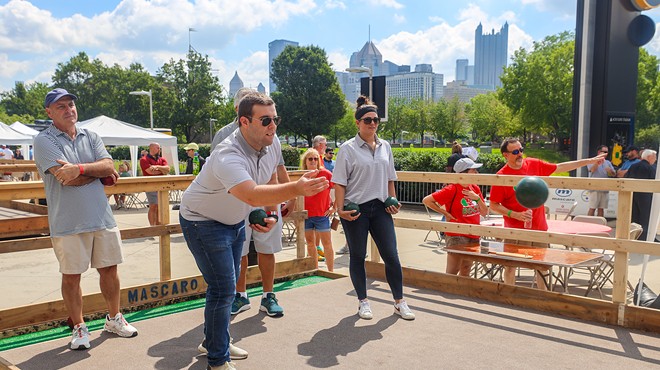City of Champions
City of Champions is an apt nickname for a city whose professional sports teams have won six Super Bowls, five Stanley Cups, and five World Series and is the home of a university whose teams have won eleven national championships. The Pittsburgh Steelers have played in eight NFL Super Bowls and won six. Only one other NFL team has won six Lombardi trophies, and it is not a city team, but rather a regional one — the New England Patriots. Despite losing the very first World Series in 1903, the Pittsburgh Pirates played in six more, winning five, between 1909 and 1979. The Pittsburgh Penguins, having played in thirty-seven playoff games, six of which were Stanley Cup Finals, have won five Stanley Cups. Pittsburgh is also the only American city where all the professional sports teams wear the same colors — Black and Gold. These are the official colors of Pittsburgh and were on eponymous William Pitt’s coat of arms.City of Bridges
Pittsburgh has long been alluded to as “The City of Bridges.” This is quite an appropriate sobriquet when you consider that every road into and out of the city has bridges. Pittsburgh has every type of conventional bridge except for a drawbridge. Pittsburgh bridges also span the entire spectrum of bridge building from ancient Roman stone arch bridges to computer designed bridges. This city of bridges has also contributed significantly to the development of bridge building with Roebling’s wire rope or cable, and the fact that the Fort Pitt Bridge was the first in the world built from computer-aided design.If Pittsburgh is to validly lay claim to the title City of Bridges, it is important to document how many bridges there are in the city. In 2006 book The Bridges of Pittsburgh, I located and documented that there are 446 bridges in the City of Pittsburgh.
But numbers alone do not account for the title of “City of Bridges” — equally important is the variety. Pittsburgh has, or has had, pedestrian, automobile, railroad, bus, light rail, water, hot metal, and incline-carrying bridges. It also has or has had covered bridges, wooden bridges, all-steel bridges, toll bridges, and bridges of every style, shape and form.
Another aspect is the beauty of the city’s bridges. The Art Commission, established in 1911, evaluates the form and appearance of all bridges costing more than $25,000. Their approval is necessary prior to any bridge construction or reconstruction. One only needs to examine the Portal Bridge leading to Point State Park. Far from being strictly utilitarian, it is a work of art and quite striking when one considers that it supports an interstate highway.
Because of the rich variety and number of bridges, bridge engineers have held their annual International Bridge Conference in Pittsburgh thirty-four of the forty-one times the conference has been in existence. A highlight is a dinner cruise along the rivers in which the many bridges are visited. The bridge engineers come to Pittsburgh because the city is more than the “City of Bridges”; it is and has been a source of bridge expertise and technology recognized and used throughout the world. Also, as the Steel City, Pittsburgh has provided the material used to build bridges all over the world, in addition to construction material for other historic structures such as the Empire State Building and the Panama Canal.
Iron City/Steel City
Long before being known as the Steel City, Pittsburgh had been christened the Iron City. In the first half of the nineteenth century, iron producers and manufacturers dominated the city’s landscape. The iron industry started with George Anschutz’s blast furnace (a metallurgical furnace, the name blast coming from its introduction of high-pressure air) in 1793, located in what today is Pittsburgh’s Shadyside neighborhood.Iron occurs naturally. In native iron ore, the iron is combined with oxygen and other impurities. When the native iron ore is heated to 800 to 900 degrees Fahrenheit, the oxygen is burned off, and other impurities are removed by further heating and hammering. Thus, the importance of the blast furnace.
Although Anschutz’s pioneering efforts failed after a year, the iron industry in Pittsburgh was born and ultimately thrived. By 1815, Pittsburgh was being referred to as the Birmingham of America in reference to the great iron-producing city in England. It was also adorned with the Iron City moniker.
Two factors in Pittsburgh’s location contributed significantly to its success in both the iron and steel industries: First is its location at the juncture of three navigable rivers, all basically flowing westward. The second, particularly relevant to iron and steel production, is that Pittsburgh is in the middle of one of the country’s most productive coal fields. Indeed, the original name of Mt. Washington was Coal Hill, and the earliest inclines in the city were built to haul the coal that was so vital to the furnaces used to produce iron and steel. Iron production and manufacturing facilities dominated Pittsburgh industry until 1870. Indeed, the infamous “Hell with the lid off…” quote from an 1868 article by James Parton was referring to the iron production facilities along the Monongahela River (see below).
One of the principals in the iron industry was Andrew Carnegie, whose 1872 trip to England led to the conversion of iron production to steel production. Unlike iron, steel is not a naturally occurring substance. It is a metal alloy that must be manufactured. Basically, iron needs to be separated from oxygen with a small amount of carbon added. This is accomplished by mixing iron ore and carbon at a temperature of 3,000 degrees Fahrenheit. During Carnegie’s 1872 trip to England, he saw the Bessemer steelmaking process, which could readily convert iron ore to steel. Steel is much more durable than iron, and Carnegie readily brought the Bessemer steel making process to the Monongahela valley. Within thirty years, the City of Pittsburgh was producing one-third of the nation’s steel, and in the early 1900s, Pittsburgh became known as the Steel City.
It is interesting to wonder that if this change did not occur whether Pittsburgh’ professional football team would have been known as the Ironers.
The ’Burgh
The ’Burgh is a proper nickname for the City of Pittsburgh, as some locals fought a years-long battle to restore the final H to Pittsburg (an event the city annually celebrates on H Day — July 19). Thus, the city is a “burgh” and not a “burg.”It all began in 1758, when General John Forbes named the city Pittsburgh in honor of William Pitt, first Earl of Chatham and former Prime Minister of England, who had Scottish roots. In Scotland, most towns are pronounced “borough” but are spelled “burgh.” Pittsburgh was chartered in 1816, and the official name was Pittsburgh. However, a typographical error led to its misspelling as Pittsburg on official copies of the charter document.
The U.S. Bureau on Geographic Names was established in 1890 and the following year issued thirteen general principles to be used in standardizing place names. Among them was one that decreed that place names ending in burgh should drop the final H and use “burg.” Because of this, the city’s name was changed to Pittsburg. (Editor's note: A 2024 Pittsburgh Magazine story makes the case that the local picture was more complicated.) Although disputed by the city, the Board referred to the copies of the charter document and argued that Pittsburg was always the city’s name. Years of resistance, arguments, and discussions ensued. Ultimately, the original city charter was presented to the Board to validate that the city’s name was Pittsburgh. In July 1911, the Board reversed its decision, and Pittsburg once again became Pittsburgh. Thus, the celebration of July 19 as H-day.
This led to Pittsburgh being one of the most misspelled city names in the country, probably because there are only about six other municipalities in the United States whose name ends in -burgh.
Gateway to the West
The confluence of the Monongahela and Allegheny rivers at what is now called the Point is one of the many reasons for the existence of the City of Pittsburgh. At the end of the Revolutionary War, the Ohio River marked the beginning of westward expansion, and, due to its location, Pittsburgh was established as one of the first gateways to the west. This is best illustrated by its being the starting point for the historic 1803 Lewis and Clark expedition.This was only one of many such ventures to the west, which was the outer space of the day. Exploration adventurers, merchants, and settlers all started their westward journey in Pittsburgh. Today, the appellation of Gateway to the West has itself moved westward, as St. Louis with its famous arch now lays claim to that title.
Hell With the Lid Off
There are three cities readily accessible to the tourist, which are peculiar--Quebec, New Orleans, and Pittsburg — and of these Pittsburg is the most interesting by far. In other towns the can make up his list of lions, do them in a few hours, and go away satisfied; but here all is curious or , environs, history, geology, business, aspect, atmosphere, customs, everything. Pittsburg is a place to read up for, to unpack your trunk and settle down at, to make excursions from, and to study as you would study a group of sciences. To know Pittsburg thoroughly is a liberal education in the kind of culture demanded by modern times.The wonder is, not that Pittsburg is an assemblage of flourishing towns of 230,000 inhabitants, but that, placed at such a commanding point, it is not the flourishing and the populous city in America. might have been the site had been ten level square miles, instead of two, and those two surrounded by steep hills four hundred feet high, and by rivers a third of a mile wide. It is curiously hemmed in--that small triangle of low land upon which the city was originally built.
So begins an article by James Parton in the January 1868 issue of The Atlantic Monthly. It is hard to believe that the only quote one hears from this 13,661-word positive article about Pittsburgh is the six-word description of his overview of a nighttime view of the Monongahela River Valley at the height of iron and glass production; to wit, “Hell with the lid taken off.”
Some lesser titles Pittsburgh has borne are:
River City: The Mon, The Al, and The O have played a vital role in establishing the City and in its flourishing, so that it is only natural that sometimes the city is referred to as River City.
The 412: In 1947, area code 412 was established for the City of Pittsburgh. Now, every April 12 is celebrated as 412 Day.
The Only City with an Entrance: A 1988 New York Times article described a visitor’s journey from the airport to downtown. It said that, after passing through the Fort Pitt Tunnel, the guest is treated to a stunning view of the city and noted that this is the only city with an entrance.
Paris of Appalachia: Pittsburgh is the largest city in the entire Appalachian region and the cultural center of Northern Appalachia. It is also the title of a wonderful 2009 book by Brian O’Neill.
Blitzburgh: Mostly uttered by sports fans when one of the professional sports teams, particularly The Steelers, has an outstanding game or season.
Bob Regan has written several books on Pittsburgh, including two on Pittsburgh’s city steps and one on the city’s bridges. Although retired from the University of Pittsburgh, he still teaches one course a year.

